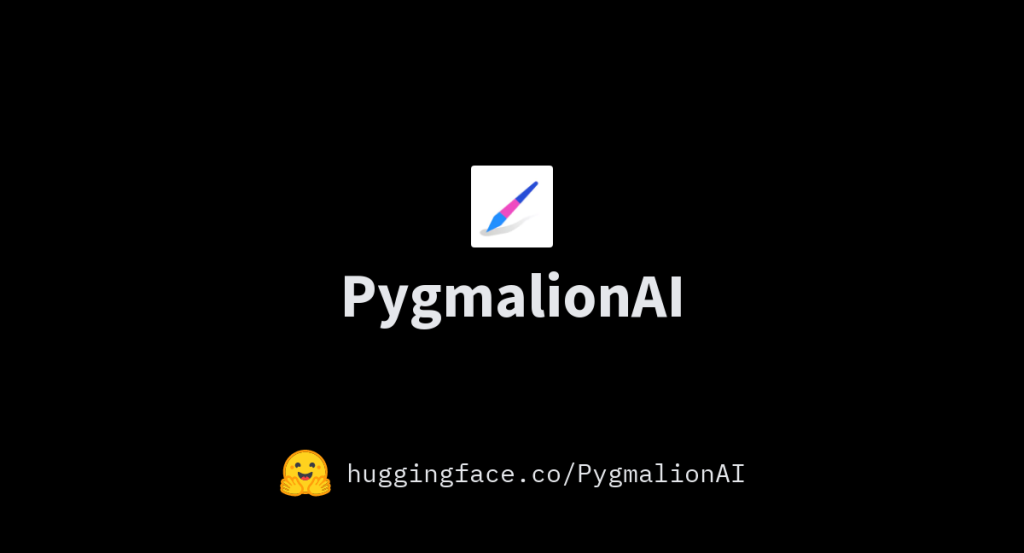Step-by-Step Guide to Use Pygmalion Locally
Pygmalion’s models can be utilized locally, granting you control and flexibility in your AI interactions. Here’s a step-by-step guide on setting up Pygmalion on your local system:
1. Ensure System Requirements
Before starting, verify that your system meets the requirements to run Pygmalion. This includes having the correct version of Python (3.8 or higher) and the required Python libraries installed, as well as sufficient RAM and VRAM for the model you plan to use.
2. Install Required Python Libraries
Pygmalion requires several Python libraries to function, including torch, transformers, safetensors, and gradio. These libraries can be installed using pip, a package manager for Python. Open your terminal or command prompt and type the following commands:
pip install torch pip install transformers pip install safetensors pip install gradio
3. Download the Notebook
Once your environment is prepared, download the notebook from either Google Colab or the provided link. Please note that the Google Colab notebook is currently closed.
4. Run the Notebook
After downloading, run the notebook like you would on Colab. HuggingFace will automatically download the model and associated files for you, while Gradio will create the user interface.
5. Backup Repository
Just in case, a backup mirror of the HuggingFace repositories and other model checkpoints can be found at https://waifu.nopanda.io.
6. Use Pygmalion on Other Platforms
If you wish to use Pygmalion on other platforms such as Kobold or Tavern, follow the guide for Linux or Windows, generously provided by an anonymous user.
Optimizing Your Experience with Pygmalion
Although Pygmalion’s models are still in their infancy, there are ways to enhance the user experience and improve the bot’s performance. Here are some tips:
1. Formatting Input
KoboldAI and TavernAI do not automatically format the input in the way Pygmalion models were trained on. Using the Pygmalion notebook will set up the formatting for you, helping the model behave as expected.
2. Define Your Persona
Example chats are the best way to define the persona you want to talk to. It’s a powerful tool to influence the character of the bot during the conversation.
3. Experiment with Sampling Settings
Don’t hesitate to play with different sampling settings such as temperature, top-p/top-k, and typical sampling. Different characters might perform better with different settings.
4. Community Tips
This rentry contains a collection of tips from the community on optimizing your experience with the bots.
If you discover any settings or tips that improve the model, make sure to share them with the community. Your input could help make Pygmalion the best it can be.
How to Get Involved
If you’re interested in contributing to the project, whether through specific skills or general support, you can connect with the team on their Matrix or voice your thoughts on /wAIfu/ (/vt/) or /aicg/ (/g/). The team appreciates all forms of help in advancing this ambitious AI project.
1. Engage on Matrix
You can connect with the Pygmalion team on their Matrix at the following link: https://matrix.to/#/#waifu-ai-collaboration-hub:halogen.city?via=halogen.city. This is an excellent place to ask questions, provide feedback, or discuss ways you could contribute to the project.
2. Participate in Online Forums
Alternatively, you can engage with the team and the broader user community on /wAIfu/ (/vt/) or /aicg/ (/g/). Even if the Pygmalion team doesn’t see your post immediately, other community members are likely to bring valuable insights to their attention.
Frequently Asked Questions
What is Pygmalion?
Pygmalion is an ambitious project born from the collective efforts of /vt/ and /g/ communities. It aims to create a new conversational AI, independent of other chatbot services. The project has so far released a series of language models: Pygmalion-350M, Pygmalion-1.3B, Pygmalion-2.7B, and Pygmalion-6B, and has plans for further enhancements.
Why isn’t the AI performing as expected?
Despite the progress made, the team behind Pygmalion is still fairly new to AI development and faces constraints in resources and knowledge compared to larger enterprises. The models they have developed, while significant for them, are still relatively small compared to larger models like GPT-3. However, they are continually striving to understand optimal settings for their models and to develop better ones. If you’re having issues, consider adjusting your formatting or refer to the section “How to get the most out of the models” for more details.
How can I contribute to the project?
Whether you possess a skillset that could advance the project or simply wish to offer support, your help is always appreciated. Connect with the team on their Matrix or voice your thoughts on /wAIfu/ (/vt/) or /aicg/ (/g/). Your contribution could significantly influence the project’s trajectory and success.
Embrace this exciting opportunity to be part of the AI revolution with Pygmalion, and start your journey in the realm of conversational AI today.











